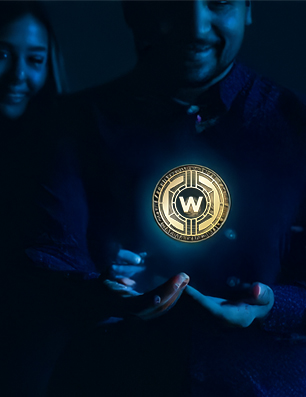- Written by: Brady Tinnin
- Sat, 19 Feb 2022
- Russian Federation
The Bitcoin Lightning Network is breaking down the walls built up by centralized financial institutions. Find out what it is and how you can use it to save on Bitcoin transaction fees. Covered: What Is The Lightning Network? Who Is Using The Lightning Network? How You Can Use Lightning Today The Bitcoin Lightning Network can […] The post How To Save On Transaction Fees With The Bitcoin Lightning Network appeared first on CryptosRus.
How To Save On Transaction Fees With The Bitcoin Lightning Network
The Bitcoin Lightning Network is breaking down the walls built up by centralized financial institutions. Find out what it is and how you can use it to save on Bitcoin transaction fees.
Covered:
- What Is The Lightning Network?
- Who Is Using The Lightning Network?
- How You Can Use Lightning Today
The Bitcoin Lightning Network can be an awfully confusing subject for those new to the space. In this article, I’ll try to break it down as simply and easily as possible so you can get a better understanding of how it works and how it’s saving the world millions, if not, billions of wasted dollars.
RECOMMENDED: JACK DORSEY IS BUILDING A DECENTRALIZED FIAT ONRAMP
What Is The Lightning Network?
Put simply, the Lightning Network is a scaling solution for Bitcoin. So what does that mean exactly? In short, it takes Bitcoin beyond just a store of value and unlocks its full potential as a superior form of money by enabling BTC to be used as a medium of exchange as well, on top of its value-protecting qualities.
Researchers Joseph Poon and Thaddeus Dryja published a draft of the Lightning Network white paper in February 2015, describing an off-chain Bitcoin protocol that hosts payment channels. Within these payment channels, each party can transfer value with each other without congesting the Bitcoin mainnet since the payments took place off-chain. It was a remarkable idea that the two researchers went on to develop fully under the company name Lightning Labs in 2016. The Lightning Network settled its first non-test network transaction on May 10th, 2017. If you want a great overview of the Lightning Network’s full history, be sure to check out this awesome website showcasing the Lightning Network’s timeline.
Think of Bitcoin as the base layer money protocol, and the Lightning Network as the second layer built on top of it. To give you a comparison to today’s tech — gold historically served as our ‘base layer’ for money, but centralized financial institutions built payment rails on top of it (the second layer) to speed up the transaction process. Gold is clunky and slow to transact with, hence why we designed things like cash, debit cards, credit cards, etc., to speed up monetary exchange. Centralized payment processors like Visa can finalize roughly 65,000 transactions per second. That’s pretty fast, considering that transacting with gold bars at that rate would probably require breaking the laws of physics.
The Bitcoin Lightning Network, on the other hand, fulfills the same function that Visa provides for transactions, but it does so at a faster rate and in a more secure manner. Specifically, the Lightning Network can currently handle up to 25 million transactions per second (according to Desiree Dickerson, Lightning Labs’ vice president of operations), and that number is consistently getting updated to greater heights. Centralized payment processors like Visa also have employees to support and bills to pay, unlike Bitcoin. Due to Bitcoin’s decentralized nature, the Lightning Network acts like Visa, but doesn’t take any fees to pay for its employees, and is much more secure than centralized processors as it takes the destruction of the entire Bitcoin network to stop, rather than just a single company.
Think of the Lightning Network like the internet itself. The internet is a global information network; there is only one, single protocol that we use to send information instantaneously, with no middleman required. Anyone can create a website and plug into the internet to start sharing information.
In the same way, the Lightning Network proposes the same solution, but for money, rather than information. Anyone can now choose to plug into this global monetary network and use it to send value instantaneously, with no middleman required.
Who Is Using The Lightning Network?
For example, the country of El Salvador, which made Bitcoin legal tender back in June 2021, is projected to save up to $400 million per year thanks to Bitcoin. A quarter of the country’s economy is made up of remittance payments, and up until Bitcoin came around, those remittances had to get processed through intermediaries like Western Union, which can take anywhere from 10-50% in fees depending on the country you want to send money to.
Western Union literally has a price estimator to calculate how much you’ll give them to send your money. Who wouldn’t want to skip that altogether, if possible?
Using the Lightning Network is a game-changer for El Salvador, because now, instead of spending unnecessary time and energy dealing with Western Union to send money abroad, you can simply open a smartphone and send value instantaneously, all around the globe, just as if you were sending a text to your friend in a different country.
Thought experiment: ask yourself how much more efficient society must have become once we introduced the internet to the world — negating the need to mail physical letters, use physical storage for information, schedule in-person meetings, etc. Now imagine if money were to undergo the same revolution, and we didn’t have to keep sending money through banks and other intermediaries like Western Union to share value. How much more efficient could society become once fully introduced to the Lightning Network?
Other countries that are adopting the Lightning Network include Argentina. Jack Mallers, the CEO of Strike, a Lightning-Network-integrated payment provider, announced last month that Strike would be landing in Argentina, and so far, it seems to be a big success.
??+100K people signed up to use Strike on the #Bitcoin Lightning Network in Argentina within 2 weeks of launching.
— Bitcoin Archive ?????? (@BTC_Archive) February 14, 2022
With Bitcoin adoption surging to rates faster than ever before, we can definitely expect to see a lot more countries plugging into the Lightning Network this year.
RECOMMENDED: LIGHTNING NETWORK: DANISH BAR SHOWS SPEED OF BITCOIN’S LAYER-2 SOLUTION
How You Can Use Lightning Today
So, if the Lightning Network sounds pretty exciting to you, you may like it even more if you start trying it out for yourself. Three mobile phone applications that are plugged into Lightning for your use today include the massively-popular Cash App, Muun wallet, and the previously-mentioned Strike application.
Cash App has been in the traditional finance game for quite some time now, competing with its major rival Venmo. However, now that Cash App integrated the Lightning Network about two weeks ago, Venmo may have some catching up to do to keep up with its competition.
Muun Wallet is a popular Bitcoin-only wallet that’s being used in places like El Salvador. Unlike Cash App or Strike, Muun does not let you buy stocks, Bitcoin, or anything for that matter. Its strict purpose is to let users send and receive Bitcoin over the Lightning network. Imagine you lived on Bitcoin Beach in El Salvador and had a few satoshis in your Muun Wallet. Instead of dealing with traditional financial institutions at all to make purchases, you and the Papaya shop on the Salvadoran coast could start doing business purely peer-to-peer using Bitcoin on Muun Wallet, without even touching dollars.
Finally, Strike is one of the best apps to start using the Lightning Network. It behaves similarly to Venmo, in that you can use it to send money to and from each other, except the key difference is that Strike utilizes the open Bitcoin Lightning Network to finalize transactions, rather than Venmo’s use of its own closed monetary network.
The comparison between Strike and Venmo really highlights the potential for Lightning and showcases its internet-like properties. Have you ever tried sending a Venmo payment to someone’s Cash App before? Probably not, because Venmo uses its own closed monetary network, meaning that Venmo payments can only go to Venmo users. Now compare that to Strike and Cash App, both of which are integrated with the Lightning network. I can send money from my Strike wallet to someone’s Cash App wallet because both of us are plugged into an open monetary network.
The current financial landscape is closed off and siloed into hundreds of different monetary networks, none of which can seamlessly talk to one another. This is why it’s really difficult for someone in the US to do casual business with someone in Uganda, for example, because both countries are using their own closed monetary networks. Imagine, as the internet did to information, we adopted the Lightning Network to bridge the gaps between all these different monetary networks and used a single, global monetary protocol to finalize transactions instantly.
That’s what the Bitcoin Lightning Network is here to accomplish. Here’s one of my favorite quotes from Strike CEO Jack Mallers:
“Money is going to consolidate onto a singular standard, and those that live in these independent monetary networks are going to die the same way that newspapers did when the internet came out.”
The post How To Save On Transaction Fees With The Bitcoin Lightning Network appeared first on CryptosRus.






